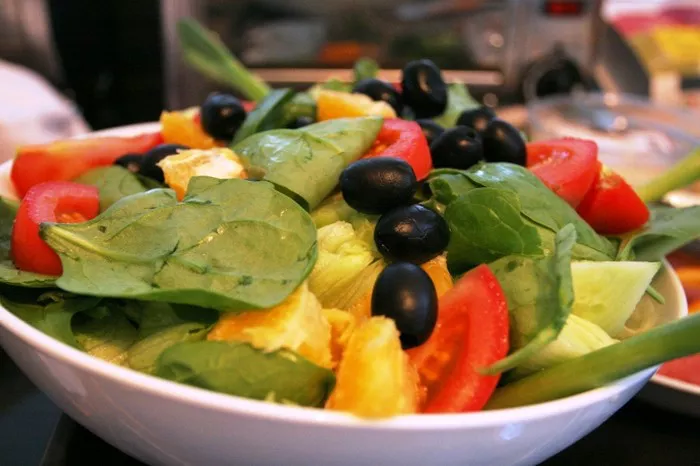Chinese dry noodles, especially the renowned Hot Dry Noodles (Reganmen in Wuhan dialect) from Hubei Province, are a staple of Chinese cuisine. These noodles are not only famous for their delicious taste but also carry significant cultural and emotional value for many people, especially those from Wuhan. Below is a comprehensive guide on how to make Chinese dry noodles at home, ensuring you capture both the flavor and the spirit of this traditional dish.
Ingredients Preparation
To make authentic Chinese dry noodles, you’ll need to gather several ingredients. Here’s a detailed list:
Noodles: Preferably alkaline noodles (known as “Reganmen” noodles in Wuhan). These noodles are available fresh or dried. If you can’t find alkaline noodles, you can use other types of noodles, but the taste may vary slightly.
Sesame Paste: About two tablespoons. This is the key ingredient that gives the noodles their signature flavor.
Spices and Condiments:
- Two tablespoons of soy sauce (dark and light)
- Half a teaspoon each of salt and chicken bouillon powder
- One tablespoon of chili oil
- Half a block of white fermented tofu (optional, for added flavor)
- A little bit of garlic water (made by soaking crushed garlic in vinegar)
- Some pickled vegetables, such as chopped or radish
Garnishes:
- Crushed peanuts or peanut butter
- Chopped green onions
- Spicy radish pickles (optional)
Making the Sauce
The sauce is crucial for the flavor of the noodles. Follow these steps to prepare it:
Dilute the Sesame Paste:
- Begin by preparing a cup of lukewarm water.
- Gradually add small amounts of water to the sesame paste while stirring in the same direction. You’ll find that the paste initially becomes thicker and more sticky.
- Continue adding water and stirring until the paste reaches a consistency where it flows smoothly like silk when spooned and tilted.
- Add salt and a pinch of sugar, stirring well to combine.
- Finally, mix in a little sesame oil to complete the sauce.
Prepare the Mixed Sauce:
- In a separate bowl, mix two tablespoons of soy sauce (preferably dark soy sauce for color) with one teaspoon of oyster sauce.
- If you like it spicy, add homemade chili oil.
Prepare the Garnishes:
- Toast some peanuts lightly in a pan with a small amount of oil, then crush them into small pieces.
- Wash and chop the green onions.
- Prepare any additional pickled vegetables you plan to use.
- Cooking the Noodles
- Now that your sauces and garnishes are ready, it’s time to cook the noodles.
Boil the Noodles:
- Bring a large pot of water to a boil.
- Add the noodles and cook for about 10-15 seconds (for fresh alkaline noodles) or until al dente (for dried noodles).
- Drain the noodles and lightly toss them with a bit of sesame oil to prevent sticking.
Assemble the Dish:
- Place the cooked noodles in a bowl.
- Pour the diluted sesame paste over the noodles and toss to coat evenly.
- Add the mixed sauce and chili oil, if using.
- Sprinkle with crushed peanuts, chopped green onions, spicy radish pickles, and any other garnishes you prefer.
- Optionally, add a splash of vinegar for a tangy flavor.
Serving Tips
Serve Hot: Chinese dry noodles are best enjoyed hot. Once the noodles cool down and become clumped together, they lose their appeal.
Pair with Beverages: Traditionally, Wuhanese people enjoy their Hot Dry Noodles with a cup of egg wine, soy milk, or tofu pudding. These beverages help balance the rich flavors of the noodles.
Customize Your Flavor: Feel free to adjust the amount of each ingredient to suit your taste preferences. Some people like it extra spicy, while others prefer a milder flavor.
Variations and Innovations
While the classic Wuhan Hot Dry Noodles are a must-try, there are many variations and innovations you can explore:
Wide Noodles: Try using wide noodles instead of the traditional thin ones for a different texture and mouthfeel.
Vegetarian Options: Omit the meat-based ingredients and use vegetable-based condiments and garnishes for a vegetarian version.
Different Spices: Experiment with different spices and herbs to create unique flavors. For example, adding a pinch of cumin or coriander powder can give the noodles a Middle Eastern twist.
Toppings: Add toppings like boiled eggs, sliced cucumbers, or pickled vegetables for added nutrition and flavor.
Cultural Significance
Chinese dry noodles, especially Hot Dry Noodles, are more than just a food item. They are deeply rooted in the cultural heritage of Wuhan and Hubei Province. For many people, these noodles evoke memories of home, family, and childhood. They are a symbol of the city’s unique culinary tradition and a source of pride for its inhabitants.
Eating Hot Dry Noodles in the morning, known locally as “guo zao,” is a cherished ritual for Wuhanese people. It’s a way to start the day with a hearty and flavorful meal that provides energy and satisfaction. For those who have left Wuhan but still crave the taste of their hometown, making these noodles at home is a way to reconnect with their roots and cultural identity.
Conclusion
Making Chinese dry noodles at home can be a rewarding experience. It allows you to customize the flavors and ingredients to suit your taste preferences while preserving the traditional essence of the dish. With this guide, you’ll be able to create delicious and authentic Chinese dry noodles that will satisfy your cravings and bring a touch of Wuhan’s culinary heritage to your kitchen. Whether you’re a seasoned chef or a beginner in the kitchen, give this recipe a try and enjoy the delicious taste of Chinese dry noodles.
Related Topics:
























